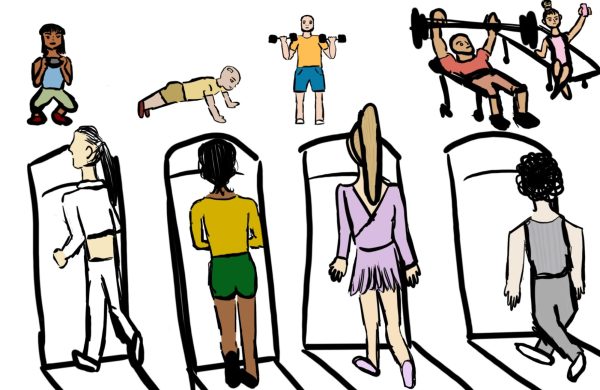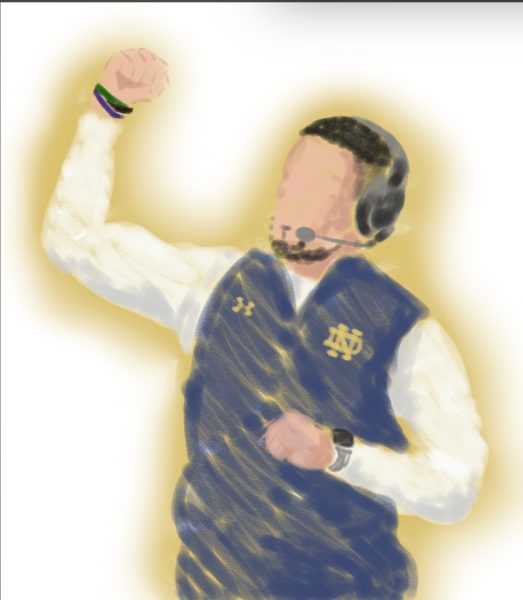Pricey training creates athletic discrimination
For decades, athletics have provided underprivileged individuals with near endless opportunities. Due to their difficult childhood environments, professional athletes such as LeBron James and Derrick Rose have provided inspiration to underprivileged athletes for years. Their stories serve as an inspiration to others who may be facing similar challenges, showing that with hard work, dedication, and a strong support system, anything is possible. These athletes have not only achieved personal success, but they have also used their platform to give back to their communities and inspire future generations. Their success has highlighted the importance of sports in providing opportunities for underprivileged individuals to break the cycle of poverty and achieve their goals. Through sports, these individuals can develop important life skills such as teamwork, discipline, and perseverance, which can help them succeed both on and off the field.
While professional athletes from underprivileged backgrounds have inspired many, the rising cost of sports training and participation is making it increasingly difficult for poor youth athletes to follow in their footsteps. Many young athletes from low-income families simply cannot afford the high cost of specialized coaching, travel, equipment, facilities, and sports medicine required to compete at the highest levels. This has led to an unprecedented amount of youth athletes from poor environments being forced to quit the very sports that provide them so many valuable assets.
“The fact that there is no current solution for underprivileged athletes to remain in sports because of financial constraints is horrible,” said senior Josh Bottarini. “It should be the responsibility of schools to step in and make sure these athletes have the same opportunities as their peers.”
The limited access to specialized training and facilities creates an uneven playing field for poor youth athletes, as they do not have the same opportunities to develop their skills as their wealthier peers. For example, many young athletes from low-income families cannot afford to join travel teams, which often require significant financial investments to participate. These teams frequently travel to different states or even countries to compete against other elite teams, and the costs associated with transportation, lodging, and meals can be prohibitively expensive.
Similarly, many poor youth athletes cannot afford to pay for private coaches, who can offer personalized instruction and mentorship that can help young athletes develop their skills and reach their potential. Private coaching can be prohibitively expensive, with some coaches charging hundreds or even thousands of dollars per session. As a result, poor youth athletes often rely on school or community programs, which may not have the same resources or expertise as private coaching.
“Expensive and luxury sports training have sucked all the fun out of youth sports,” said junior Luca Cutinello. High school sports are beginning to resemble professional sports when in reality they should exist for youth athletes to have fun and develop lifelong skills.
Furthermore, the high cost of participating in elite travel teams and specialized training programs can make it nearly impossible for poor youth athletes to compete at the highest levels. The cost of these programs can run into thousands of dollars per year, making them inaccessible to those who cannot afford it.
As a result, many talented young athletes from underprivileged backgrounds are being priced out of their sports, robbing them of the opportunity to develop their skills and pursue their dreams. This lack of diversity in sports not only limits the potential of these young athletes, but it also perpetuates the idea that sports are only for the wealthy, leading to a lack of opportunities and representation for future generations.
While sports have historically provided opportunities for underprivileged individuals to break the cycle of poverty and achieve their goals, the rising cost of sports training and participation is making it increasingly difficult for poor youth athletes to follow in the footsteps of their idols. This lack of access to specialized coaching, travel teams, and specialized facilities is limiting the potential of many talented young athletes from underprivileged backgrounds and perpetuating the idea that sports are only for the wealthy. It is imperative that schools and communities work together to provide the same opportunities for all youth athletes, regardless of their financial background, to ensure that sports remain a pathway to success and a source of inspiration for generations to come.
Your donation will support the student journalists of Saint Viator High School. Your contribution will allow us to purchase equipment and cover our annual website hosting costs.





